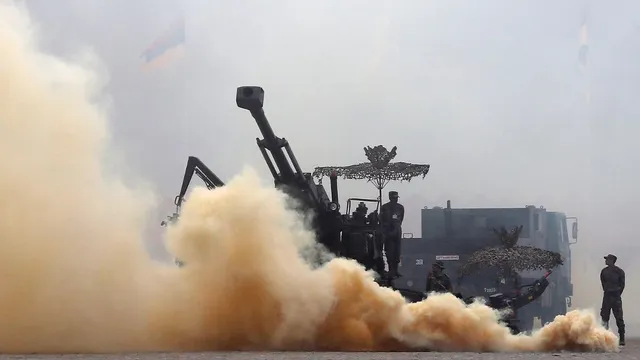- By Supratik Das
- Sat, 22 Nov 2025 02:25 PM (IST)
- Source:JND
A bipartisan US congressional panel has claimed that China used the India-Pakistan military confrontation in May as an opportunity to test and promote its latest combat systems, treating the brief conflict as a real-world trial of its modern weaponry. The assessment features in the annual report of the US-China Economic and Security Review Commission, released this week.
According to the report, Beijing “opportunistically leveraged” the four-day flare-up triggered by the Pahalgam terror attack to showcase the capability of its advanced systems to potential buyers while simultaneously collecting battlefield data for future use.
First Active Combat Use Of Modern Systems
The commission noted that the May 7–10 confrontation marked the first recorded use in active combat of China’s HQ-9 air-defence system, PL-15 air-to-air missile, and J-10 fighter jets to push China’s export and test its own military modernisation.
The report states that Pakistan’s battlefield performance, including interceptions and retaliatory actions, was bolstered by these systems. In the days following the ceasefire, Chinese diplomatic missions reportedly highlighted the “success” of these deployments in their outreach to foreign governments, aiming to secure weapons contracts.
The panel added that by June, Beijing had offered Islamabad 40 J-35 fifth-generation fighters, KJ-500 airborne early-warning aircraft, and ballistic missile defence systems—seen as an extension of its expanding strategic partnership with Pakistan.
China Ran Campaign To Discredit Rafale Jets
In a separate finding, the commission cited French intelligence to assert that China launched a coordinated disinformation campaign after the conflict to undermine the reputation of the French-built Rafale jets used by India.
Fake social-media accounts reportedly circulated AI-generated images and video-game visuals, falsely presented as “Rafale debris” destroyed by Chinese-origin systems. The report also alleges that Chinese embassy officials persuaded Indonesia to pause an ongoing Rafale purchase, pushing instead for Beijing’s J-35 and related platforms. China’s Foreign Ministry, however, dismissed the charges. Spokesperson Mao Ning called the commission’s report “ideologically biased” and “disinformation in itself”.
Operation Sindoor: India’s Retaliatory Strikes
The India-Pakistan clash erupted after the Pahalgam terror attack on April 22, which left 26 civilians dead. India traced cross-border links and launched Operation Sindoor on May 7, striking terror camps and military infrastructure inside Pakistan and in Pakistan-occupied Kashmir.
Pakistan retaliated with missiles and drones, which Indian officials said were intercepted or neutralised before causing major damage. India then targeted several Pakistani airfields in response. A ceasefire was announced on May 10.
The report also touched on the broader India-China equation, noting an “asymmetry” in how both sides approach border resolution. While India seeks a durable settlement that satisfies domestic expectations, the panel says China prefers high-visibility engagements that offer partial outcomes without firm follow-through.

